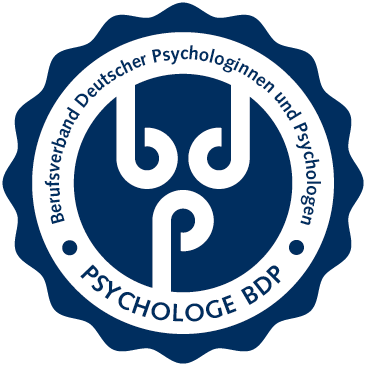What is GESTALT?
Most people don't really have a clear understanding of what "Gestalt therapy" is. Therefore, I would like to briefly explain some of the essential characteristics of Gestalt therapy:
Gestalt therapy is a psychotherapeutic method developed by Fritz and Laura Perls in the mid-20th century. The term "Gestalt" was adopted from Gestalt psychology, which focused on how we perceive. What comes to the fore when we perceive an image? What changes when we look at an image for a longer period of time.
Gestalt psychology has recognized that human perception tends to close open Gestalts—this is a foundation of Gestalt therapy. Gestalt therapy views the human being as a mental, emotional, and physical unit and assumes a lifelong process of growth. Gestalt therapy places particular emphasis on the development of awareness. Therefore, the perception of feelings, the body, and desires/goals in the here and now is particularly supported. It is a dialogic process that places particular importance on the encounter between therapist and client. The therapist-client relationship is characterized by an unbiased approach. The therapist accompanies the client on their journey and brings a willingness to "be surprised." The client's current problems become the focus of therapy. These can also be experiences from the past if they are currently significant. Old patterns come alive in the here and now and can thus be consciously changed. New experiences are gained through trial and error, experimentation, and discovery. Gestalt therapy therefore also works creatively, for example through representation, work with the empty chair, imagination... The focus is not on the technique, but on the associated expression of feelings.
History of the GESTALT approach
A key source of the Gestalt approach is Gestalt therapy, developed by Fritz and Laura Perls and Paul Goodman in the USA in the early 1950s, which also became established and further developed in Europe in the 1970s. The roots of Gestalt therapy lie in psychoanalysis, perceptual psychology, existentialism, and phenomenology. Over the past fifty years, the Gestalt approach has found its way into many professional fields (counseling & coaching, teaching, learning, organizational consulting, and therapy).
Basic assumptions of the GESTALT approach
The Gestalt approach assumes that humans are embedded in a social and ecological environment. Growth, development, and the search for meaning occur in contact with this environment. Trust in the self-regulatory forces and acceptance of the current situation create the conditions for change and a lively exchange between the individual and their environment.
Central to this are the perceptual psychology concepts of "gestalt" and "contact." According to Perls, humans perceive themselves and their environment as meaningful entities—as Gestalts. Successful exchange with the world requires lively contact processes. These can be interrupted due to disruptions. So-called "unfinished Gestalts," for example, unresolved conflicts, are the result of these contact disruptions.
Improved perception, Perls speaks of “awareness” (attention and mindfulness), of the self and the environment in all its facets is the way to overcome these disturbances.
Philosophy
© 2026
All Rights Reserved | ILEKO Institute for Life Skills









